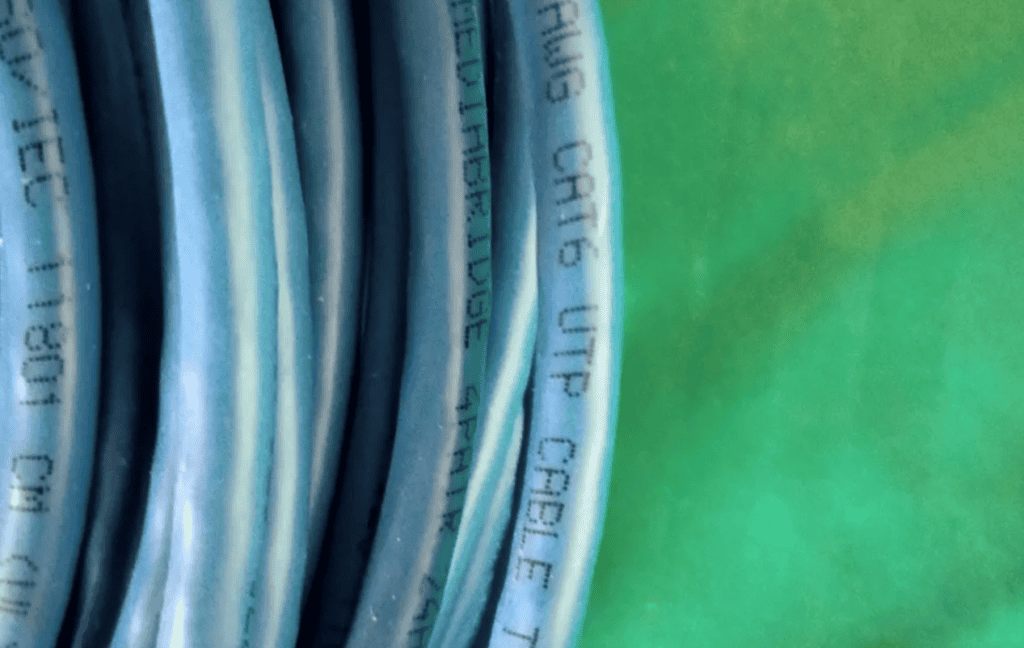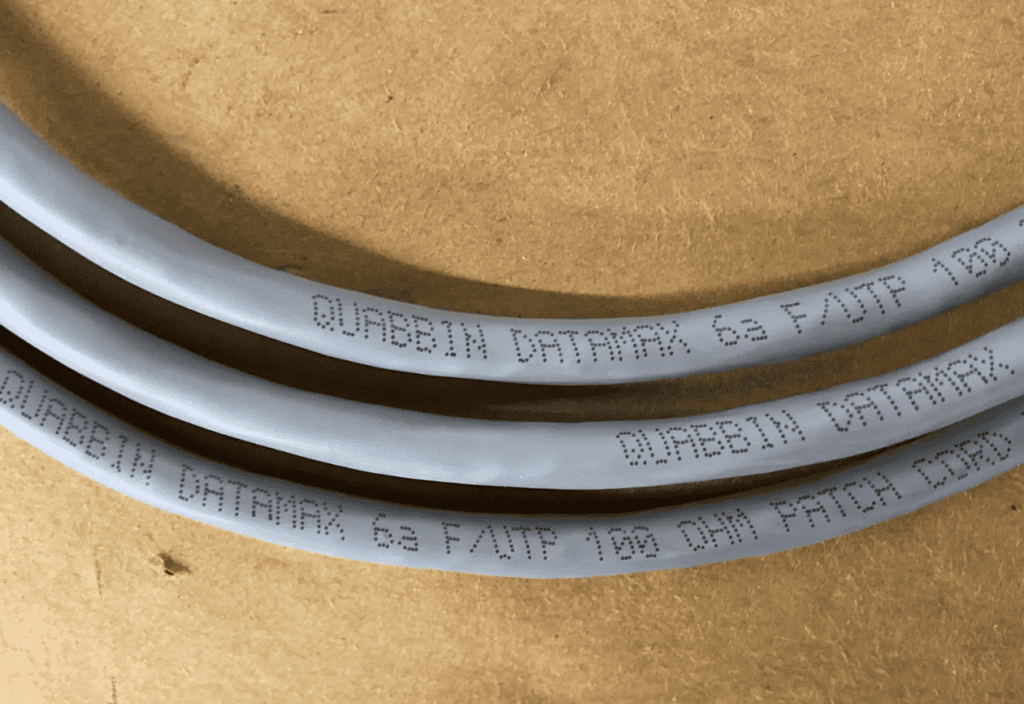Cat6 and Cat6a are very similar functionally, but there are speed and specifications differences that separate the two. It’s important to consider your specific needs and budget to ensure optimal network performance. Both types of ethernet cables are used on RJ45 networks for connectivity. Cat6 is usually the more budget-friendly option and is suitable for most home and small office networks. On the other hand, Cat6a is more expensive but offers faster speeds and longer cable runs, making it ideal for demanding environments and for use in buildings.
Cat6 supports data transfer speeds of up to 10 Gbps over shorter distances (up to 55 meters) and can handle up to 250 MHz. In comparison, Cat6a can support 10 Gbps speeds over longer distances (up to 100 meters) and handle up to 500 MHz. Despite its thicker outer jacket, Cat6a provides better performance and reliability, especially in busy network environments. Understanding these differences can help you make the right decision for your specific network needs.
Cat6 vs. Cat6a: Understanding the Key Differences
Technical Specifications
| Specification | Cat6 | Cat6a |
|---|---|---|
| Frequency | Up to 250 MHz | Up to 500 MHz |
| Data Rate | 10 Gbps up to 55 meters | 10 Gbps up to 100 meters |
| Wire Twisting | Less twists per inch | More twists per inch |
| Shielding | Unshielded (UTP) or shielded (STP) | Unshielded (UTP) or shielded (STP) |
Image Of Cat 6 Sheathing

Image Of Cat6a Sheathing

Performance and Applications
Cat6 is suitable for most home and small office networks, providing reliable Gigabit Ethernet speeds. Cat6a shines in demanding environments requiring faster speeds and longer cable runs. It’s ideal for data centers, large office networks, and applications like high-resolution video streaming.
Cost and Installation
Cat6 cables are more affordable and easier to install due to their smaller size and flexibility. Cat6a cables are thicker, stiffer, and require specialized connectors, making them pricier and more challenging to install.

Future-Proofing
While both Cat6 and Cat6a are compatible with current networking standards, Cat6a offers better future-proofing. Its higher bandwidth and improved shielding prepare it for potential future network upgrades and technologies.
Choosing the Right Cable
Consider your specific needs and budget. For most home or small office setups, Cat6 is sufficient. If you prioritize future-proofing or have high-bandwidth demands, Cat6a is the better choice.
Key Takeaways
- Cat6a cables offer higher speeds and longer transmission distances than Cat6 cables.
- Cat6 supports up to 250 MHz and is best for shorter distances.
- Cat6a supports up to 500 MHz and is better for larger spaces or high data needs.
Characteristics of Cat6 and Cat6a Cables
Cat6 and Cat6a cables serve essential roles in network connectivity. They differ in their features, performance, applications, and resistance to interference.
Fundamental Features
Cat6 cables are part of the Category 6 family. They use copper conductors and support Gigabit Ethernet speeds. The maximum frequency is 250 MHz. They can handle speeds up to 10 Gbps but only for short distances, up to 55 meters.
Cat6a cables stand for “augmented Cat6”. They improve on Cat6 by supporting frequencies up to 500 MHz. They maintain 10 Gbps speeds up to 100 meters.
Performance and Capability
Cat6 cables offer stable performance for most home and office networks. They can support high-speed data transfer but only over shorter distances.
Cat6a cables are designed for higher performance. They provide reliable 10 Gbps speeds even at longer distances, up to 100 meters. These cables are essential for data centers and larger networks needing consistent speed over distance.
Installation and Application
Cat6 cables are easier to install due to their thinner diameter and lighter weight. They fit well in most existing infrastructure without needing significant changes.
Cat6a cables are bulkier and heavier, making them harder to install in tight spaces. They require higher specification connectors like patch panels, wall jacks, and RJ45 connectors. These factors make installation more challenging but worthwhile for the speed benefits.
Interference and Crosstalk
Cat6 cables are vulnerable to interference and crosstalk over longer distances. They use minimal shielding, which can affect their performance in noisy environments.
Cat6a cables have better shielding and tighter copper conductor twists. This design helps reduce interference, near-end crosstalk, and alien crosstalk, which results in better signal integrity and clearer data transmission.
Comparative Aspects
Cat6 vs. Cat6a boils down to speed and distance. Cat6 supports 10 Gbps up to 55 meters. Cat6a extends this to 100 meters. Cat6a offers better shielding and less interference but at a higher cost and with more challenging installation requirements.
Advanced Applications
Cat6 cables work well for home networks, small offices, VoIP, and CCTV systems. They are cost-effective and easy to install, making them a popular choice.
Cat6a cables are ideal for data centers, high-speed data transfer applications, and environments needing reliable 10 Gbps over longer distances. They future-proof networks for upcoming technologies and demanding applications.
In summary, Cat6a offers superior performance and capabilities, especially for larger networks and data centers. Cat6 remains a good choice for less demanding environments.
Frequently Asked Questions
Cat6 and Cat6a cables are common for network installations in homes and offices. They differ in performance, connection, cost, and use cases.
What are the primary uses of Cat6 and Cat6a cables in network installations?
Cat6 cables are used for standard Ethernet networks. They are ideal for most home and office environments.
Cat6a cables can handle higher speeds and longer distances. They are often used in data centers and larger network installations.
Can Cat6 connectors be used with Cat6a cables effectively?
Cat6 connectors can work with Cat6a cables. However, using Cat6a connectors is better. They ensure the best performance.
How do Cat6 and Cat6a cables differ in terms of performance specifications?
Cat6 cables support up to 250 MHz and 10 Gbp/s for 55 meters.
Cat6a cables support 500 MHz and 10 Gbp/s for 100 meters.
Is there a significant difference between Cat6a and Cat7 cables when considering an upgrade?
Cat7 cables support up to 600 MHz and require special connectors. They offer better performance but might need more setup.
Cat6a cables use standard RJ45 connectors, which are easier to install.
What considerations should be made when comparing the prices of Cat6a cables?
Cat6a cables are more expensive than Cat6 cables. However, they offer better performance and longer distances.
When comparing prices, think about the network needs and future upgrades.
In what scenarios is it beneficial to upgrade from Cat6 to Cat6a infrastructure?
Upgrading to Cat6a is beneficial in high-speed, high-performance networks.
Large offices, data centers, and places requiring future-proofing will benefit from Cat6a cables.







